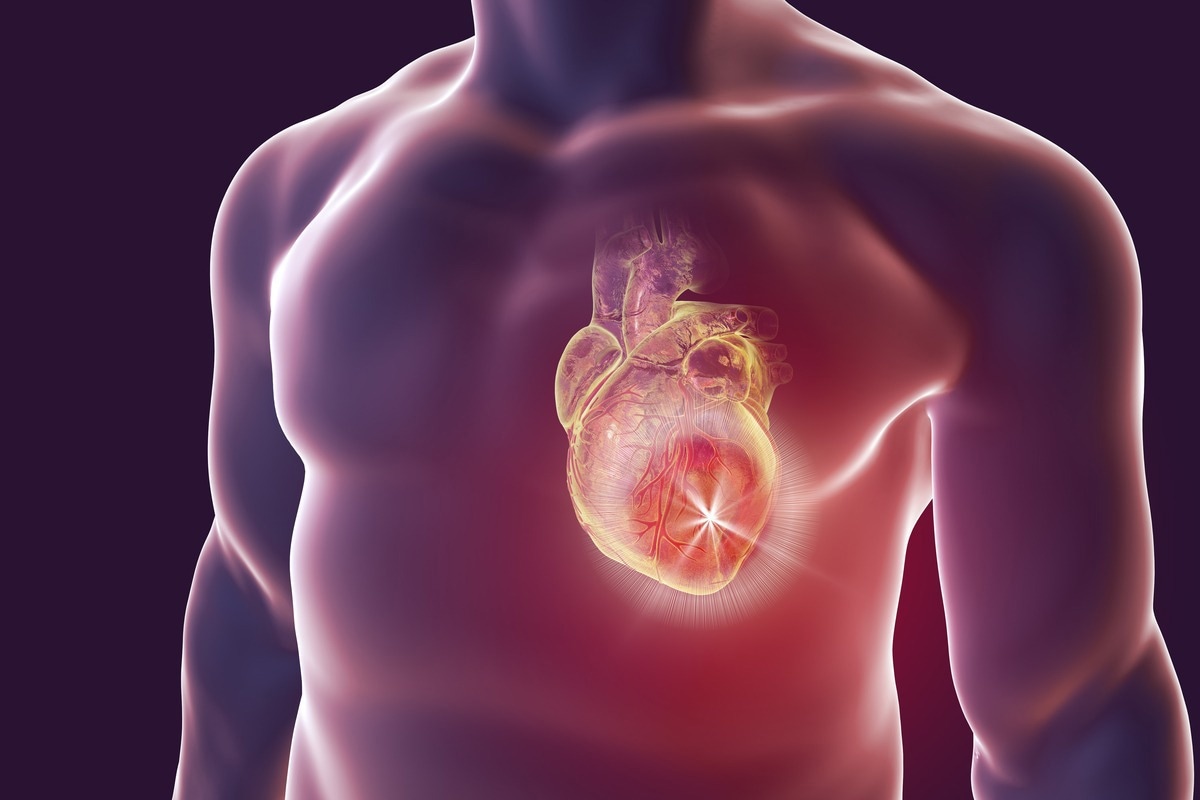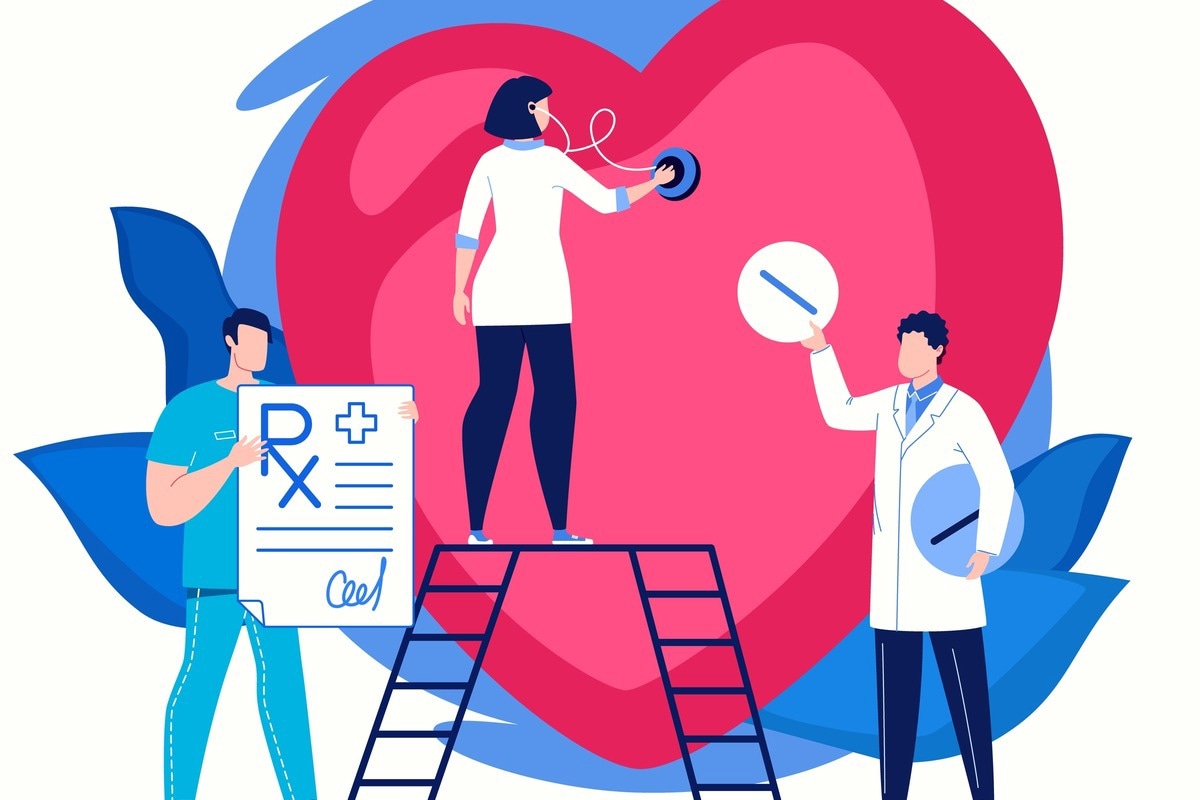What is a heart attack?
What are the treatment options for a heart attack?
How to recover from a heart attack
Cardiac rehabilitation
Medications
References
Further reading
Heart attack, also known as myocardial infarction, occurs when the blood supply to the heart is blocked suddenly. The condition can be fatal if left untreated. Timely recovery of normal activity is possible after a heart attack by maintaining a healthy lifestyle and reducing the level of stress.

Image Credit: Kateryna Kon/Shutterstock.com
What is a heart attack?
A heart attack is primarily caused by the sudden disruption of blood supply to a part of the heart muscle. There are certain medical conditions responsible for the blockage of blood supply, including coronary artery disease and severe spasm or contraction of the coronary artery. If the blood supply is not restored through therapeutic interventions, more severe damage to the heart muscle can occur.
The most common symptoms of a heart attack include pain or discomfort in the chest, jaw, neck, back, arms, or shoulders, dizziness, sweating, nausea/vomiting, passing out, and breathlessness.
Heart attack risk factors include high blood pressure, high blood cholesterol, diabetes, and obesity. Elderly people and those with a family history of heart attack are at higher risk of developing the condition. Several lifestyle factors, such as an unhealthy diet rich in saturated or trans fat and cholesterol, lack of physical activity, and excessive alcohol consumption and smoking, can increase the risk of a heart attack.
What are the treatment options for a heart attack?
A heart attack is a condition of medical emergency. Thus, seeking medical attention immediately after experiencing heart attack symptoms is vital. Doctors generally perform an electrocardiogram (ECG) and physical examinations to detect the condition.
Treatments of heart attack primarily focus on restoring blood supply to the affected heart muscle so that the percentage of heart damage can be reduced. The blood supply can be restored by reopening the coronary artery blockage (angioplasty), dissolving the blood clot through medication (thrombolysis), or surgically restoring normal blood flow using a blood vessel (coronary bypass surgery).
How to recover from a heart attack
Complete recovery from heart attack and restoration of normal life activities can take a few weeks to 2 – 3 months, depending on the severity of the condition and the body’s response to it.
Sufficient rest and relaxation are two important things for a quicker recovery process. It is important to avoid stress and other conditions that may increase the load on the heart. A heart attack survivor should gradually restore their physical fitness and distribute normal life activities throughout the day.
Routine physical activity is important for heart attack recovery. The intensity of physical activity should be increased slowly and steadily under the guidance of medical professionals.
Another important thing is eating healthy foods with high fiber content and low cholesterol. A balanced amount of protein and calorie intake is also important. A heart-friendly diet should include complex carbohydrates instead of simple carbohydrates for energy. In addition, potassium, magnesium, and calcium intake should be increased, and sodium intake should be restricted.
Cardiac rehabilitation
Cardiac rehabilitation programs are the best strategy to recover rapidly from a heart attack. These programs are supervised by healthcare professionals and are designed to improve the physical and mental health and lifestyle habits of heart attack survivors through exercise training, lifestyle education, and stress reduction counseling.
Heart attack survivors can avail these programs in hospitals, rehabilitation centers, or at home. The programs are supervised by a team of healthcare professionals, including doctors, nurses, nutritionists, physical therapists, and counselors. The sessions are usually performed for about 3 months. However, some intensive programs may take 2 – 8 months.

Image Credit: charactervectorart/Shutterstock.com
Physical exercises included in cardiac rehabilitation help strengthen the heart and body, improve blood circulation, reduce blood pressure, and relieve the symptoms of heart attack, including chest pain. Most exercises are aerobic, including jogging, bicycling, and swimming. Similarly, lifestyle educations about eating a healthy diet, performing physical activity, and quitting smoking and drinking are important for preventing future heart complications.
Heart attack survivors often develop mental health complications, including fear, anxiety, depression, and anger. Depression that lasts up to 6 months may lead to sleep disorders, appetite problems, fatigue, low esteem, and an indifferent attitude towards life. These mental health conditions can be improved, and stress levels can be reduced through proper counseling.
Studies have shown that cardiac rehabilitation programs are very useful in improving mood, functionality, and overall wellbeing. These programs help increase adherence to medication and reduce the risk of death from heart complications.
Medications
Besides lifestyle changes, strict adherence to doctor-prescribed medicines is vital for reducing the risk of having another heart attack. The medicines required to prevent future heart problems include angiotensin-converting enzyme (ACE2) inhibitors, beta-blockers, anti-platelets, and statins.
ACE2 inhibitors reduce blood pressure by dilating blood vessels and decreasing blood volume. Beta-blockers are used to relax heart muscles and reduce the workload of the heart. Anti-platelet medicines are used to prevent blood clot formation. Statins are used to reduce blood cholesterol levels.
References
- Heart Attack Symptoms, Risk, and Recovery. 2021. Centers for Disease Control and Prevention. Available at: https://www.cdc.gov/heartdisease/heart_attack.htm
- How Cardiac Rehabilitation Can Help Heal Your Heart. 2021. Centers for Disease Control and Prevention. Available at: https://www.cdc.gov/heartdisease/cardiac_rehabilitation.htm
- Heart Attack. 2019. UK National Health Service. Available at: https://www.nhs.uk/conditions/heart-attack/
- Heart Attack. 2019. British Heart Foundation. Available at: https://www.bhf.org.uk/informationsupport/conditions/heart-attack
Further Reading
- All Heart Attack (Myocardial Infarction) Content
- What is a Heart Attack?
- What Causes A Heart Attack?
- Heart Attack Symptoms
- Heart Attack Diagnosis
Last Updated: Jun 24, 2022

Written by
Dr. Sanchari Sinha Dutta
Dr. Sanchari Sinha Dutta is a science communicator who believes in spreading the power of science in every corner of the world. She has a Bachelor of Science (B.Sc.) degree and a Master's of Science (M.Sc.) in biology and human physiology. Following her Master's degree, Sanchari went on to study a Ph.D. in human physiology. She has authored more than 10 original research articles, all of which have been published in world renowned international journals.
Source: Read Full Article
